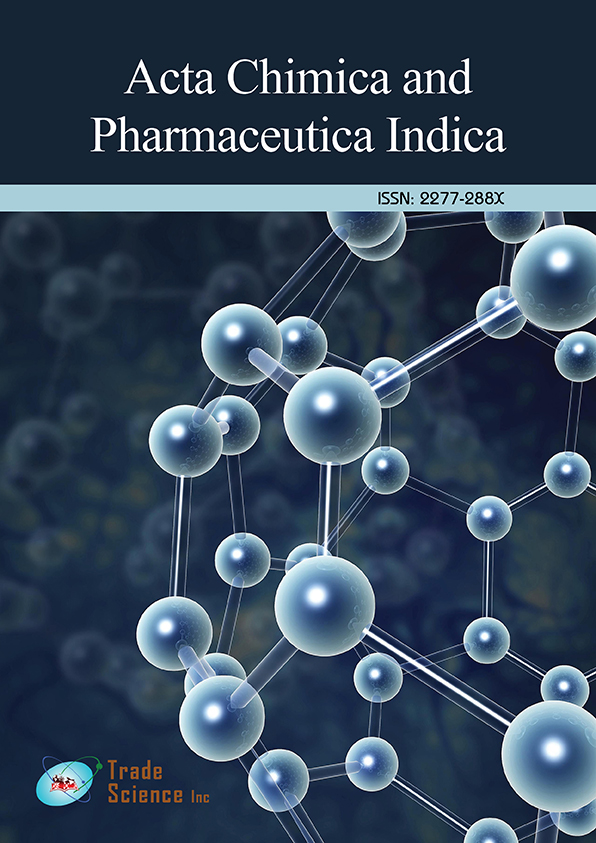Perspective
, Volume: 13( 2) DOI: 10.37532/2277-288X.2023.13(2).204The Use of Coating Agents to Improve the Blood Circulation Time of Liposomes
- *Correspondence:
- Xiaodong WuDivision of Neurotoxicology, Faculty of Pharmacy, Brazil, E-mail: Xiaodong8798@gmail.com
Received: May 01,2023, Manuscript No. tsacpi-24-116871; Editor Assigned: May 05,2023, Pre-QC No. tsacpi-24-116871(PQ); Reviewed: May 20,2023, QC No. tsacpi-24-116871(Q); Revised: May 25,2023, Manuscript No. tsacpi-24-116871(R); Published: May 29,2023. DOI: 10.37532/2277-288X.2023.13(2).204
Citation:Wu X. The Use of Coating Agents to Improve the Blood Circulation Time of Liposomes. Acta Chim Pharm Indica 2023;13(2):1-2.
Abstract
Liposomes, as promising drug delivery vehicles, have gained significant attention due to their ability to encapsulate therapeutic agents and enhance drug efficacy. However, their short blood circulation time limits their potential in targeted drug delivery. Coating agents have emerged as a viable strategy to prolong the blood circulation time of liposomes by imparting stealth properties. This research article explores the various coating agents utilized to enhance the circulation time of liposomes and their implications for improving drug delivery and therapeutic outcomes.
Keywords
Phosphatidylethanolamine; Polymeric chains
Introduction
Liposomes, lipid-based vesicles resembling cell membranes, have garnered considerable interest in the field of drug delivery owing to their versatility, biocompatibility, and ability to encapsulate both hydrophilic and hydrophobic drugs.
However, the success of liposomal drug delivery is hindered by their rapid clearance from the bloodstream, primarily attributed to the Mononuclear Phagocytic System (MPS) recognition. To address this limitation, various coating agents have been explored to provide a stealth shield, prolonging the blood circulation time of liposomes and improving their potential for targeted drug delivery.
PEG is widely used to coat liposomes, creating a hydrophilic layer that hinders MPS recognition. PEGylation significantly extends the blood circulation time by reducing opsonization and improving colloidal stability.
Incorporating lipids like Phosphatidylethanolamine (PE) with polymeric chains (e.g., PEG) in liposomal formulations provides stealth properties. The stealth layer minimizes protein adsorption, thus prolonging blood circulation.
Chitosan, a natural polysaccharide, has been employed to coat liposomes, enhancing their stability and reducing uptake by phagocytic cells. The chitosan coating helps in delaying clearance and improving drug delivery efficiency.
Various hydrophilic polymers, such as hyaluronic acid and dextran, have been utilized to modify liposomal surfaces. These coatings confer stealthiness, reducing opsonization and prolonging blood circulation.
Conclusion
The utilization of coating agents to prolong the blood circulation time of liposomes is a pivotal advancement in the field of drug delivery. Coating agents such as PEG, stealth lipids, chitosan, and hydrophilic polymers create a stealth shield around liposomes,preventing rapid clearance by the MPS. This enhancement in circulation time allows for increased drug delivery efficiency and improved therapeutic outcomes. Future research should focus on optimizing coating strategies to achieve the maximum potential of liposomal drug delivery, ensuring effective and targeted treatment for various diseases.
